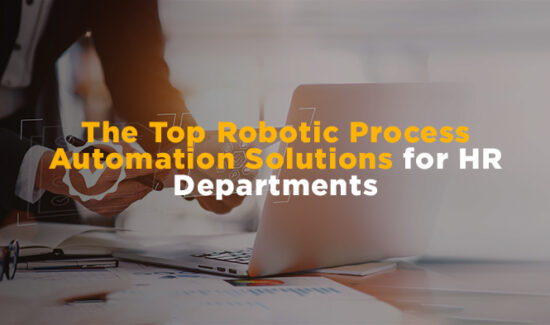Understanding the Difference Between RPA and BPM


The editors at Solutions Review have compiled a breakdown of the differences between Robotic Process Automation (RPA) and Business Process Management (BPM) technology solutions.
In today’s rapidly evolving technological landscape, businesses need tools to help them enhance their operational efficiency and productivity. Robotic Process Automation (RPA) and Business Process Management (BPM) have emerged as some of the most effective and widely adopted approaches to achieving these business objectives. While both RPA and BPM focus on process optimization, they differ in their fundamental principles and implementation.
With that in mind, the Solutions Review editors have compiled definitions for RPA and BPM technologies and provided a simple rundown of what makes them different but equally valuable solutions in an enterprise’s evolving tech stack.
Defining Robotic Process Automation (RPA)
Robotic Process Automation, or RPA, refers to using software robots or intelligent automation tools to automate repetitive and rule-based tasks within business processes. These bots are designed to execute specific, structured processes (i.e., manual data entry, transaction processing, data extraction, data manipulation, etc.) with speed, accuracy, and consistency, freeing human workers from mundane and time-consuming activities. Additionally, RPA solutions typically automate selected tasks or subprocesses to optimize day-to-day operations.
Defining Business Process Management (BPM)
The concept of business process management has been around for centuries, first utilized during the industrial revolution. The dawn of computer technology brought the framework for BPM as we know it today, which now encompasses the identification, design, execution, monitoring, and continuous improvement stages of business processes to help businesses achieve and maintain operational excellence. With BPM solutions, organizations can analyze workflows, eliminate bottlenecks, enhance experiences, find ways to strengthen internal collaborations, streamline processes, align those processes with strategic goals, and ensure adherence to any relevant business rules or regulations.
4 Key Differences Between RPA and BPM
While RPA and BPM share the common goal of process improvement, there are fundamental differences between the two approaches. Here are four of the most notable distinctions:
Focus and Scope
RPA primarily targets task-level automation, focusing on specific repetitive activities within an existing process or system. It uses tactical automation to address particular pain points, reduce unnecessary human intervention, increase accuracy, and enhance speed. On the other hand, BPM takes a broader approach and concentrates on end-to-end process management that addresses the entire lifecycle of a process, including its design, execution, monitoring, and optimization.
Automation Capabilities
RPA tools focus on automating structured, rules-based, and repetitive tasks. These tools can emulate human actions interact with user interfaces, and work across applications, making them suitable for automating manual tasks in data entry, reconciliation, and report generation. Meanwhile, while capable of automating tasks, BPM platforms also encompass other aspects of process improvement. Standard BPM functionalities model processes, define rules, monitor performance, and enable process orchestration and integration.
Integration and Process Complexity
RPA is known for its ease of implementation, as it can automate tasks without significant changes to existing systems or infrastructure, which makes it a versatile choice for companies that need to optimize processes that span multiple systems. In contrast, BPM focuses on end-to-end process optimization and often requires integration with the systems, databases, and APIs it interacts with to streamline workflows and ensure seamless data exchange.
Process Analysis and Continuous Improvement
BPM places a strong emphasis on process analysis, modeling, and optimization. It employs techniques and tools like process mapping, value stream analysis, real-time monitoring, and business rules management to identify inefficiencies, bottlenecks, and opportunities for improvement. While RPA can provide insights into a company’s processes, it aims to automate specific tasks instead of analyzing and optimizing broader process flows.
Final Thoughts
Every business, regardless of size or industry, has a series of tasks, events, and decisions that move work from start to completion through business processes. Business Process Management (BPM) solutions provide a holistic approach to the optimization and automation of those processes, while Robotic Process Automation (RPA) takes a more granular approach, dealing with discreet, repetitive tasks. They work alongside each other and can even co-exist in the same technology platform, but they are built for different purposes and, as such, cannot entirely replace the other.
























